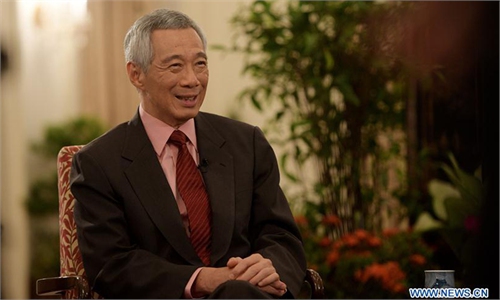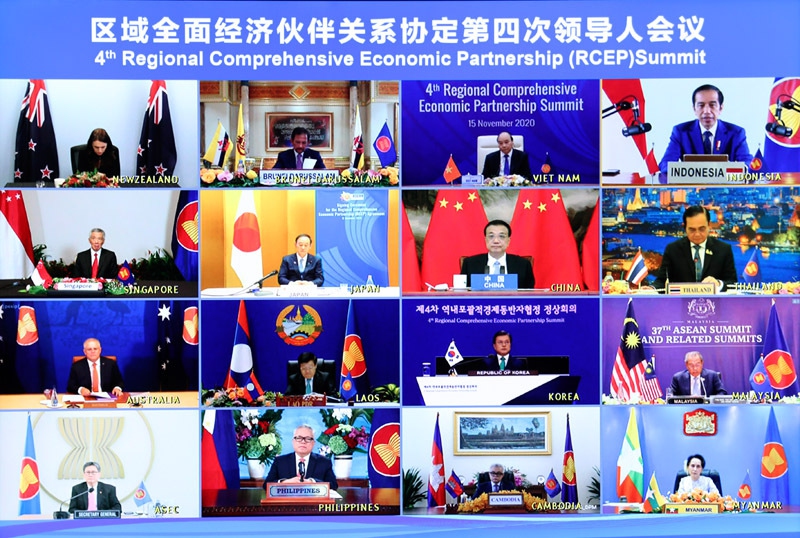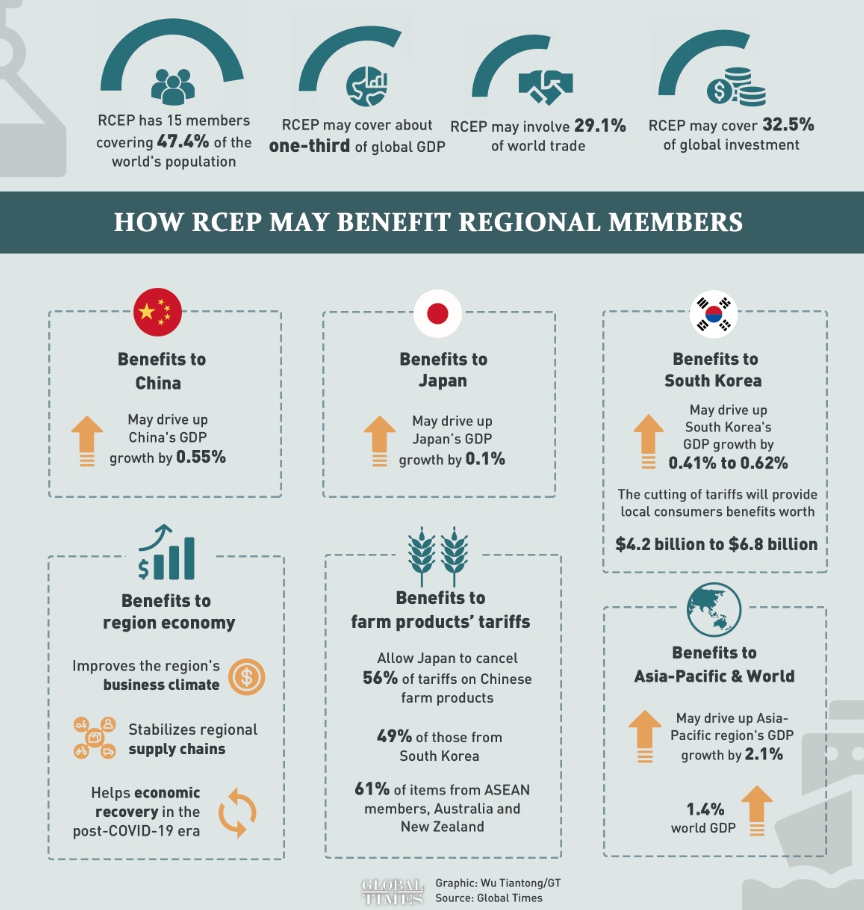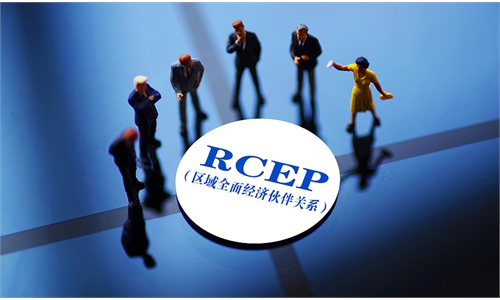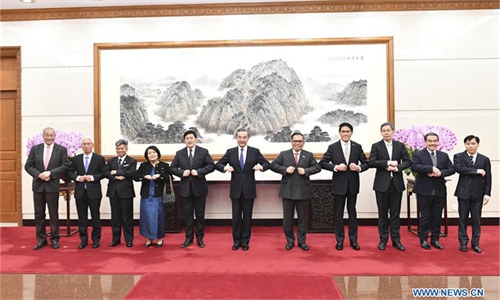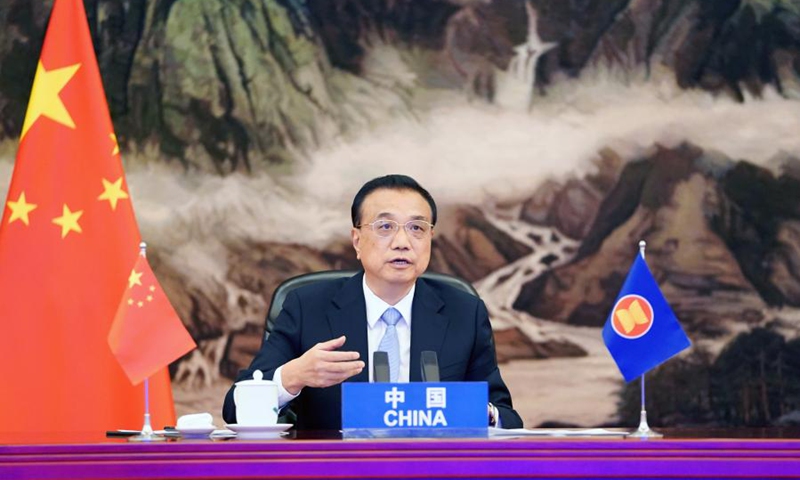Azmin showing the RCEP agreement document during the signing ceremony witnessed by Muhyiddin on Nov 15. – fotoBERNAMA\

ON behalf of the Government of Malaysia, I signed the historic Regional Comprehensive Economic Partnership (RCEP) agreement together with 14 other RCEP participating countries (RPCs).
Witnessing this momentous occasion, the prime minister said that the signing signifies to the world that Asean, with its five Free Trade Agreement (FTA) partners, places utmost priority on regional economic integration that facilitates cross-border trade, investments and the easing of non-tariff measures.
The signing is the culmination of eight years of arduous and protracted negotiations involving 31 rounds of negotiations, eight ministerial meetings and four summits.
Undoubtedly, it represents a significant and imperative milestone in the integration and revitalisation of economies of the 15 parties.
Further, this will also be a testament to the strengthening of the multilateral trading system as well as upholding the development agenda in the WTO.
Being the largest FTA in the world, covering 15 countries with 2.2 billion people or nearly a third (29.7%) of the world’s population, RCEP represents US$24.8bil or almost a third (28.9%) of the world’s GDP based on World Bank’s 2018 data.

With different economic development levels of all parties, RCEP will contribute to sustaining Malaysia as a preferred trading hub and investment destination.
To Malaysian businesses, it will mean tariff elimination and reduction for merchandise goods, including the facilitation of export and import of goods among the RCEP countries.
Service providers including e-commerce will be able to enjoy greater market access in terms of cross-border supply and establishing commercial presence in the RCEP markets.
In addition, RCEP will promote, facilitate and protect the investment climate of participating countries within the region. This also includes information exchange and promotion of transparency measures to facilitate business and investment within the RCEP area.
Realising that SMEs play a pivotal role to the backbone of every economies, RCEP could provide a level playing field between developed and least developed countries.
There is a specific chapter on SMEs providing provisions for information exchange and promotion of transparency measures to facilitate business and investment within the region, including providing economic and technical cooperation especially to SMEs.
RCEP can be an economic recovery tool against Covid-19 which will help to ensure opening of markets as well as uninterrupted supply chain.
The RCEP amalgamates and streamlines the existing Asean Plus One FTAs involving Japan, South Korea, China, Australia and New Zealand into an inclusive and comprehensive agreement that will enhance inter and intra-regional trade and investment, strengthen regional value chains, as well as facilitate transparency, information sharing and harmonisation of technical regulations and standards.
RCEP reflects our strong commitment for international trade, connectivity, rules-based multilateral trading system and enhancing free flow of trade and investment.
Datuk Seri Mohamed Azmin Ali Senior Minister Minister of International Trade and Industry
Related posts:
China and 14 other economies signed the world's largest trade deal, the Regional Comprehensive Economic Partn..
Related
RCEP to pave the way for economic recovery
Malaysia's goals in the RCEP | The Star
Few willing to join coalition that excludes players like China: Singapore PM
Few countries would be willing to join a coalition that excludes players like China, Singaporean Prime Minister Lee Hsien Loong said here Tuesday.
'Few willing to join coalition that excludes players like China'
China wants level playing field for its firms in US
Insight - Can RCEP defend the global trading order?
 Pact can lead to greater market access
Pact can lead to greater market access
RCEP and the role of SMEs
Time for SMEs, GLCs to take advantage of RCEP



